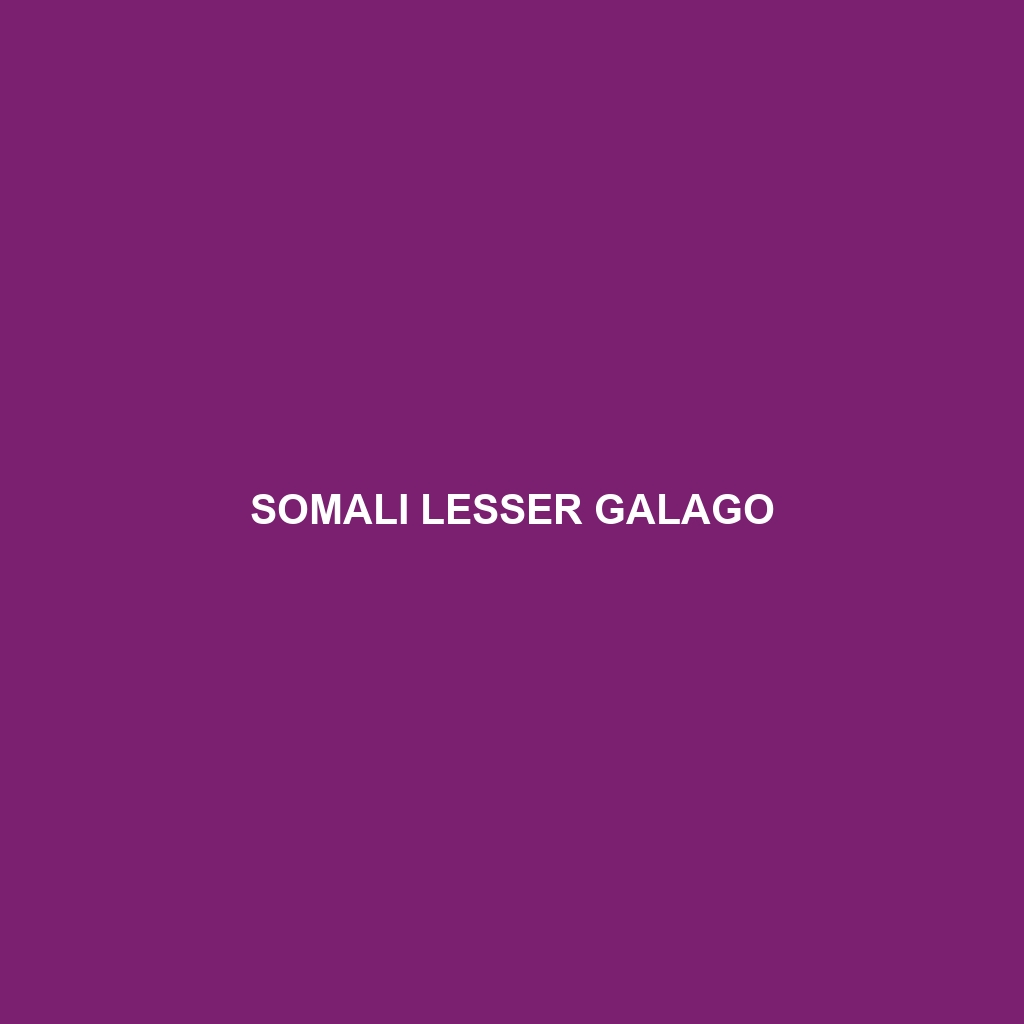Somali Lesser Galago (Common Name)
Common Name: Somali Lesser Galago
Scientific Name: Galago gallarum
Habitat
The Somali Lesser Galago is primarily found in the arid and semi-arid regions of the Horn of Africa, particularly in Somalia and surrounding areas. These primates inhabit dry forests, scrublands, and savannahs where they can easily forage for food and find shelter among trees and shrubs.
Physical Characteristics
Somali Lesser Galagos are small, agile primates weighing approximately 0.5 to 1 kilogram (1.1 to 2.2 pounds) and measuring about 20 to 30 centimeters (8 to 12 inches) in length, with a similarly long tail. Their fur is typically a light grayish-brown, aiding in camouflage amongst the branches of their habitats. Distinctive features include large, expressive eyes, and long limbs, designed for powerful leaps from branch to branch, making them highly adapted for a life in the trees.
Behavior
This species exhibits nocturnal behavior, being most active during the night. Somali Lesser Galagos are known for their incredible jumping abilities, often leaping over 3 meters (approximately 10 feet) in their search for food. They communicate through a variety of vocalizations, including whistles and grunts, to maintain social structures.
Diet
As omnivores, Somali Lesser Galagos primarily feed on insects, fruits, and gum from trees. Their diet consists largely of nocturnal insects, such as crickets and beetles, but they also enjoy ripe fruits and tree saps, exhibiting flexibility in their feeding habits, which aids their survival in varied environments.
Reproduction
Reproductive activity peaks during the wet season when food is abundant. Female Somali Lesser Galagos give birth to a single offspring after a gestation period of approximately 130 days. Offspring are typically nursed for about 3-4 months before becoming independent, and mothers show strong parental care, grooming, and protection of their young.
Conservation Status
The Somali Lesser Galago is currently listed as vulnerable due to habitat loss from deforestation, agricultural expansion, and human encroachment. Conservation efforts are needed to protect their remaining habitats and mitigate the factors leading to their decline.
Interesting Facts
Somali Lesser Galagos possess a unique ability to rotate their heads nearly 180 degrees, allowing them to be highly aware of their surroundings. Additionally, they have a specialized night vision, which aids in their nocturnal lifestyle.
Role in Ecosystem
Somali Lesser Galagos play a crucial role in their ecosystem as both prey and predator. They contribute to controlling insect populations while also serving as a food source for larger predators. Their feeding habits support seed dispersal, thus aiding in plant regeneration within their habitat.
